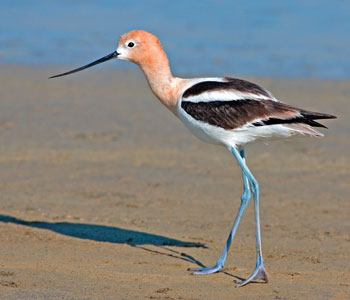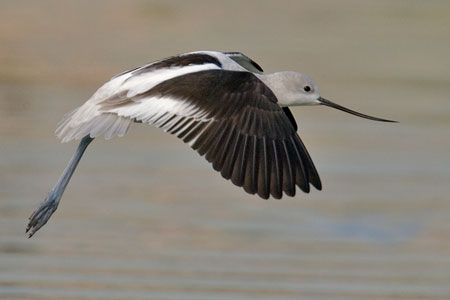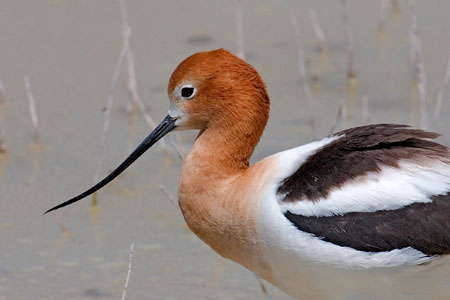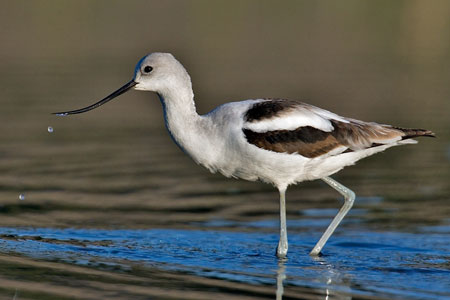
Home | About Us | Projects | Maps | Facts
NatureMapping Animal Facts
American Avocet
|
American Avocet (Recurvirostra americana)
Breeding adults have buffy-orange plumage on the head and neck (see bottom photo).
From September to February, the heads and necks are gray to whitish in non-breeding adults. Juveniles have pale pinkish-orange plumage on the head and neck.
Calls:
The call is a repeated, high-pitched "kleek." Range / Habitat: During the summer, the American Avocet breeds in the western Great Plains, from Saskatchewan and Alberta southward through Montana and the Dakotas to eastern New Mexico and the Texas Panhandle. Also breeds in isolated wetland areas in the arid western states, and along coast of California and Texas. Some birds breed on Atlantic Coast and others breed in central Mexico. Winters in California and Mexico, and along coast from Texas to North Carolina (source: All About Birds). American Avocets occupy shallow freshwater habitat in open country. They typically feed in open water 10-20 centimeters deep, but they also swim regularly in water that is too deep for wading. Highly productive alkaline ponds and lakes are ideal for foraging for crustaceans and small fish. Click the range map to learn more about the distribution of American Avocet in California. 
Diet: American Avocet primarily eats insects and small crustaceans. They occasionally eat seeds and small fish. Behavior: American Avocets forage by sweeping their long bills from side to side with the tip of the curved bill barely submerged in water. The adults defend their young vigorously using an array of alarm calls and distraction displays. They will also dive-bomb predators if the eggs or nestlings are directly threatened. Nesting: Nest building is a task of males and females. They scrape out the nest depression on the ground, then add lining such as pebbles, grass, and feathers throughout incubation period. The female usually lays four eggs which the male helps to incubate. Another female will sometimes lay 1-4 additional eggs in the same nest. Although, these 'dump nests' rarely succeed. Chicks are very precocial and able to leave the nest within 1-2 hours of hatching. Day-old avocets can walk, swim, and even dive to escape predators. The young form flocks with other fledglings and adults when leaving the nesting area following breeding season. American Avocets normally raise only one brood per season. Nesting American Avocets aggressively attack predators to protect the nest site. They sometimes physically strike Northern Harriers, Common Ravens or other predatory birds. 
Conservation: Populations declined in the 1960s and 1970s, largely from the loss of wetlands from water diversion for human use including housing developments, business parks and shopping malls.
Contamination of wetland habitat with selenium caused increased developmental abnormalities and mortality.
Since 1995, owners of selenium-contaminated sites, in northern California, have been required to provide safe wetland habitat for
the species. Breeding success on the new sites has been much greater than initially expected, but long-term prospects for
breeding at these sites are not clear (source: All About Birds). Selenium is a toxic nonmetallic element related to sulfur and is used in photocells.
Did you know?

American Avocet with buffy-orange plumage during the breeding season (photo by Natures Pics) More information:
|

